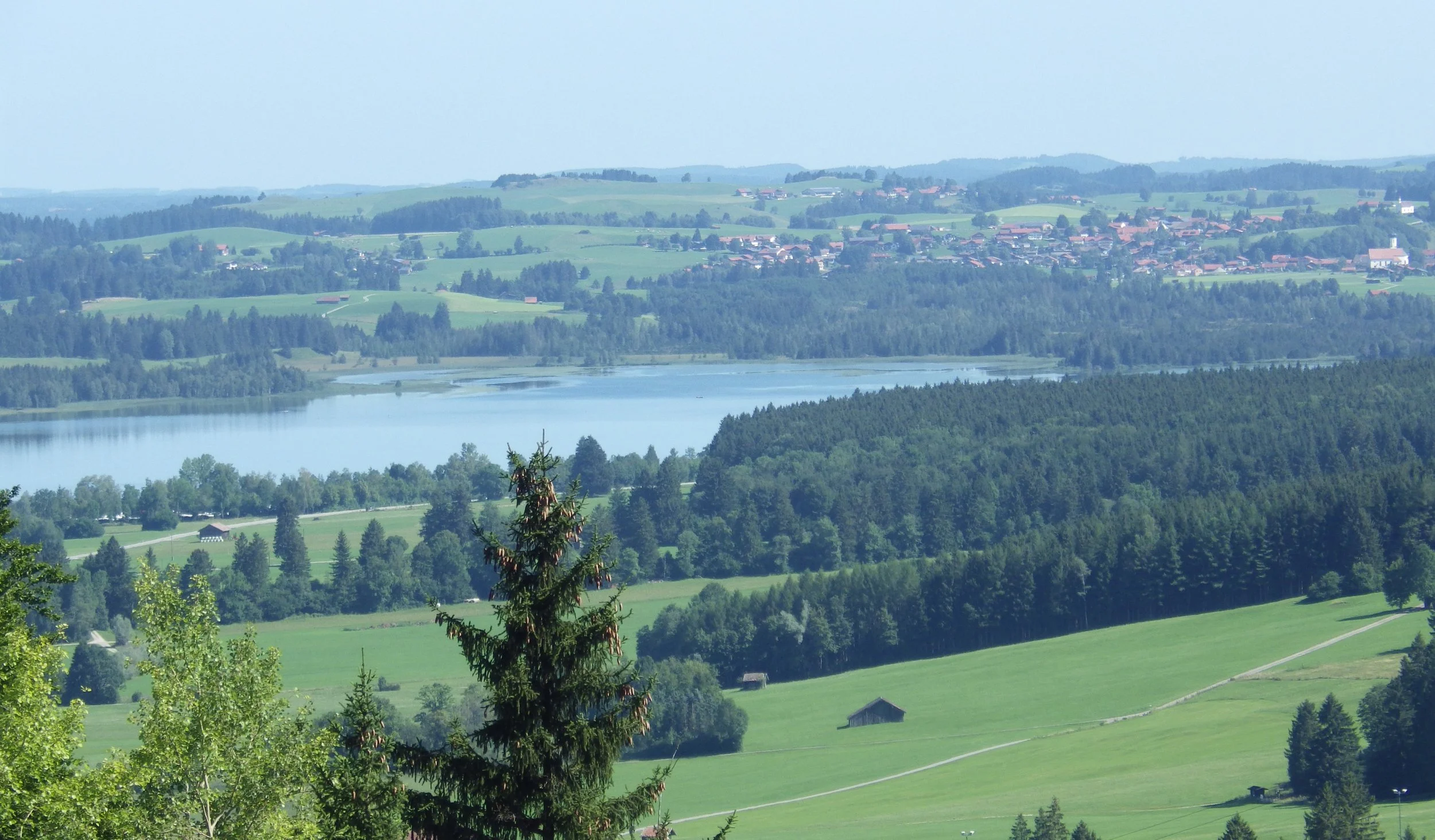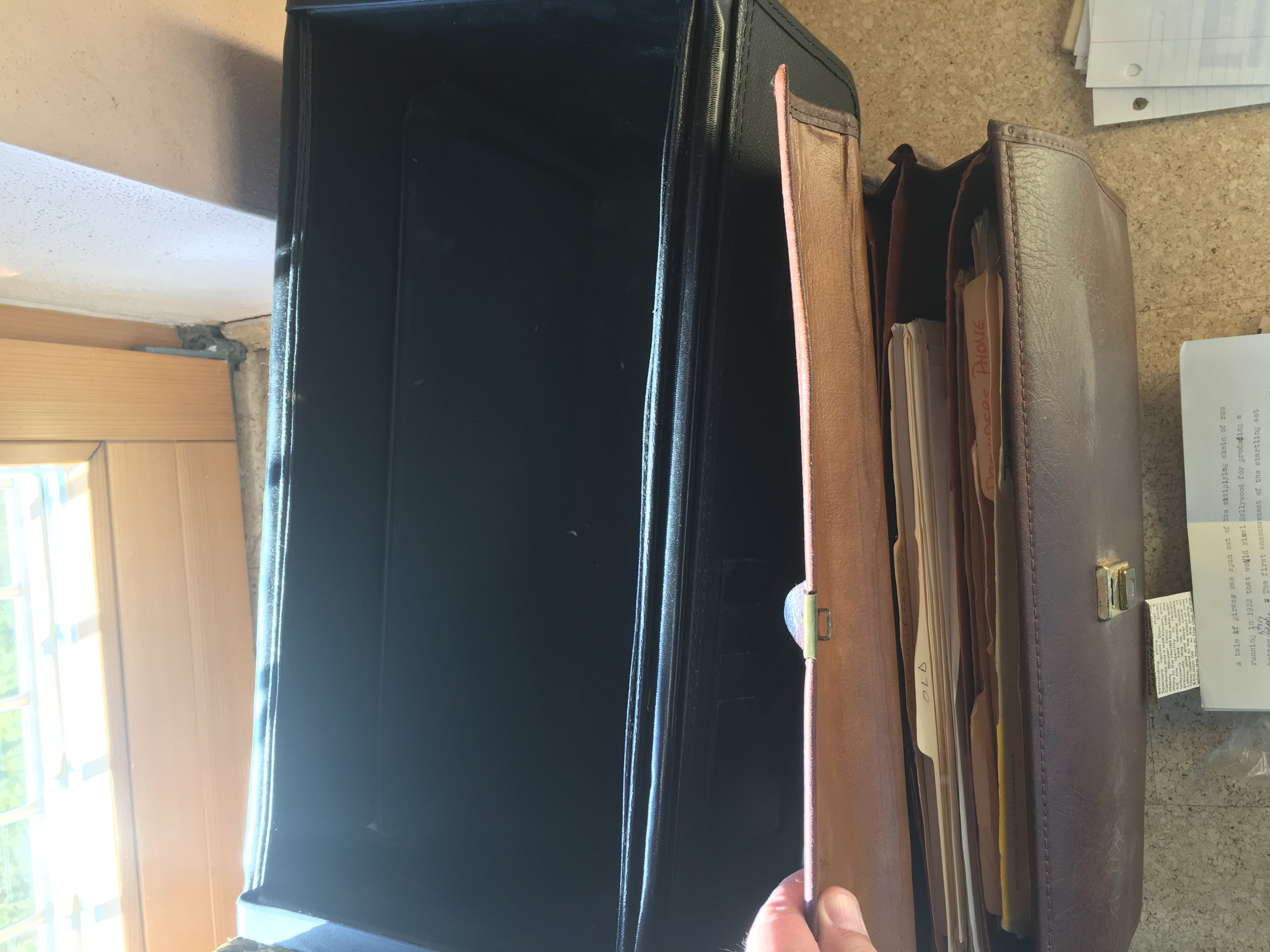Recently I cracked open an aging can of gold that I have very carefully kept with me through every move. From the first house on Benachi, to the second, to On the Green, South Alabama and back twice, to Washington State twice, Louisiana once, Hueytown, Cropwell, and Fairhope I have hand carried this once growing container full of stuff. The only time I didn’t bring it with me personally was the move to Germany and don’t tell Ginger I was nervous about it the whole time until our household goods arrived.
Amongst the treasures I found was a gem of an article written by Mr. Dale Greenwell on The Byrd Sawmill. There are lots of articles by Mr. Greenwell, Edmond Boudreaux, and Walter F. Fountain in this case. Everything except for the first article by Mr. Fountain that got me started saving this stuff to begin with but that’s a different story (literally and figuratively). So I re-typed the article here to share. It was printed in the Biloxi-D’Iberville Press (the name may have changed by then but I only have the article not the whole paper) in Nov 2005, so most of my family was a little preoccupied with other things then catching up on history. Namely they were busy throwing out water-damaged and moldy history. It is not my work and I do not have any permission from anyone to re-print it but as my purpose here is to document and provide it for other relatives of the man I never heard call Charles, only rarely Everett, but mostly Bossy, I hope I can be forgiven. Uncle Cleo and Granny get mentioned as well as a photograph of a few other closer relatives
There was one word error I left and one missing punctuation mark I added. I also didn’t capitalize french because I stopped capitalizing france and french in 2004. My trips to france made me happy to have done so. Other than that it is re-typed verbatim, unless my fingers slipped. I hope my family enjoys it as much as I did reading it, and yes, there’s a strong possibility that it’s going to appear in my oldest work in progress as I continue to wallow in early 20th Century Biloxi.
The Byrd Sawmill
By Dale Greenwell
Biloxi-D'Iberville Press
Nov 18 & 25, 2005
Over the weekend I had the opportunity to take a ride with Webster Lee through the wasteland of what used to be D’Iberville, then I visited with Andy Balius, who now owns part of what once was the first industry on the north shore—the “old brick yard.” It was a trip down memory lane, a nostalgic but painful trip.
Remembering what once was. Remembering where my folks and your folks once worked, played, lived and, well…Andy and I walked along the waterfront, aware of the brick fragments that marked the site of the Biloxi brick factory, and before that the french colonial brick yard. The 1723 storm had put it out of business, but it was reopened after the Civil War (The War of Northern Aggression). It was the source of bricks for many of New Orleans’ buildings, and more than a few of our own.
By the time the factory had reopened, the Coast had moved from schooners, as the principal source for moving materials between cities, to railroads and steam-driven boats and barges. And with the railroads and steam engines came the first major industry to the Coast and the South: Timber.
Until then, as I’ve reported more than once, charcoal, turpentine and bricks were the industries, albeit nothing major. Then the rails made seafood king on the south side and timber king on the north side. These industries created booms that encouraged thousands to emigrate here.
In the last years of the 19th century and the early years of the 20th, the brick yard immediately west of 7th Avenue, and the Dantzler Mill at Vennie (Cedar Lake) were the major industries on the north side. By 1926 both were closed. Brick factories had sprung up throughout Mississippi with ready access to rails, and the huge yellow pine forests had been reduced to stumpage. Of course, this played havoc with the turpentine industry.
Yet, some men found scattered strands of timber that had escaped the large corporations’ axes and saws. These men had grown up cutting trees and couldn’t get it out of their blood. One of those me in the subject of this story: Charles Everett Byrd.
Born in the Ft. Bayou settlement in 1893, he married a girl from there, Agnes Garlott. Before WWI, he was cutting timber, whenever he could find it, in the Jackson County outback. At the time, logs had to be floated down stream or drug by oxen through woodlands and swamps to mills, like his, that changed locations regularly.
While Dantzler was in operation, Charles, like other independents, hauled his lumber to Dantzler’s where it became lost in the millions of board feet shipped annually to Europe via Gulfport and Ship Island on four-and five-masted or steam-driven ships.
As forests diminished, Charles moved westward, toting his little mill with him. The family built a home and lumber supply business at the intersection of Strawberry Lane and Caillavet Street in Biloxi. His logging camp and mill were now at Palmer Creek, near the camp around. Chryle (Shrill) Warden joined Charles in the founding days and remained with him to the end.
The business had a truck, but four oxen and two large white mules did the hauling through the rough of the Mississippi woods. After the timber was milled it was hauled by truck to Biloxi, to be sold in the Byrd’s Lumber Yard—until the bottom fell out of the market.
The depression following the crash of 1929 destroyed the real estate and building boom throughout the world. The family lumber yard and home did not escape the wrath. After losing all but pieces of mill equipment, the oxen and the mules, Charles started over, including a deal with Dantzler for several pieces of mill equipment left in the large, vacant building on Cedar Lake Island, where trains once unloaded logs from the forest and loaded barges with lumber bound for Europe.
By skiff and truck, Charles gathered his assets and moved them to a spot at Holland Grantham’s dairy, just west of what is now Central Avenue. The mules and oxen were with him. After all, without them there could be no timber. The were the skitters and tractors of the timber men in those days.
On July 1, 1932, in the midst of the Great Depression, Charles purchased several acres of land between School House Road and Tiger Branch (today, the northwest corner of Quave and Gorenflo Roads), where he set up operations. Before long, cabins, an office and a home were constructed.
Well, I’ve run out of space. If you don’t mind returning next week, we’ll finish the story of Byrd’s Saw Mill. So, until then, keep your lamp in the window.
Dawn is an hour away when the match is tossed into the oil splashed slabs of pine scraps inside the boiler. And before the shades of gray lighten in the eastern sky, a bit of steam generated in the flier is released through the whistle. Lamps appear in windows, and before long men are on their way to the mill.
That was the beginning of a hard day’s work, if you worked at Byrd’s Sawmill and Lumber Yard, in D’Iberville, before and during WWII.
If you perused through last week’s article, part 1, than you know where we are. The mill, after being dragged through Jackson and Harrison Counties from pre-WWI to the early depression years, finally settled in D’Iberville, between shell-paved School House Road and Tiger Creek, what is today the northwest corner of Quave and Gorenflo Roads.
In 1932, the first part of the property was purchased with hard earned money (in the depression, all money was hard earned) by Charles’ son Cleo. From then until 1937, the family purchased adjoining parcels from company profits, eventually realizing six acres.
By WWII, the property was fully developed. A new home for the Byrd family, an office, a small house and four cabins, a community wash-shed, water well with pump, saw horse with a steam engine with fresh water ponds, lumber drying racks, materials shed, and outdoor privies. Two of the basins (“camp cars”) were two small rooms built on skids, to allow transfer. Two were shotgun three-roomed houses with front porches.
Let me back up a moment. In the beginning at this location, water for the steam engine was hauled from the artesian well at D’Iberville School, a block south. A wood-burning stove and lamps served theme. Eventually, an electric line serving Grantham’s dairy was extended through the woods to the Byrd home. The nearest store was at Five Point, three blocks south. The nearest neighbors were the families of Jake Quave to the east and Columbus Parker to the south.
“Monkey” Shoemaker, Chryle (pronounced Shrill) Warden and “Smitty” Smith were Charles’ principal employees, until Charles passed away on No 12, two months after the “47 Hurricane.” The mill never reopened. Until then, Smitty and Rosie were the only blacks residing on the property. She worked in the Byrd home.
The Wardens lived across Tiger Branch; other employees lived on the premises.
Byrd’s crew cleared land on what is now Keesler AFB. His oxen, which were more like pets, were turned loose after work to graze in the area, then were hitched again to a 10-wheel wagon the next morning to drag logs out of the bogs and woods to the log truck. At that time, logs came from virgin pines, which were usually from trees more than 100 feet tall with girths of 15 feet plus.
The “Yard” handled a large variety of building materials, including sheetrock, windows, doors and hardware. People came from as far away as Hattiesburg to buy from Byrd. After Charles’ death, everything was sold. The Page family bought the storage building and moved it to their lumber yard in Ocean Springs.
Oh, I forgot to tell you about the oxen, Bess and Blue, going astray and dining on sour mash from the Garlot whiskey still near Ft. Bayou. WEhn they sobered they completed the journey to D’Iberville.
Monkey sleep with these oxen when the mill was at Grantham’s He cooked outside and is remembered for his skillet break. When he passed away, his corpse was placed in a pine coffin made at the mill yard.
During the early 20th century, when infectious diseases were playing havoc with southern cattle, the vat on Byrd’s property was used by local to dip sheep and cows.
Agnes passed away at age 92 in the 70s. Last spring I visited the Byrd property. Only the home, office and vat remained. Of particular interest was the unique variety of planking in the old house. The office had become a storage shed. The family has expressed an interest in preserving the vat (also uniquely constructed) for posterity.
Charles’ grandson, Scott Byrd, now owns the property.
In its working days, this small industry in the heart of D’Iberville, like the few seafood factories, signaled its employees (and the community) that it was time to go to work. But Byrd’s whistle also marked the end of the day with a few toots.
I wager there will one day be an historic marker at the site. Let’s hope so. Until then, keep your lamp in the window.



















































































































